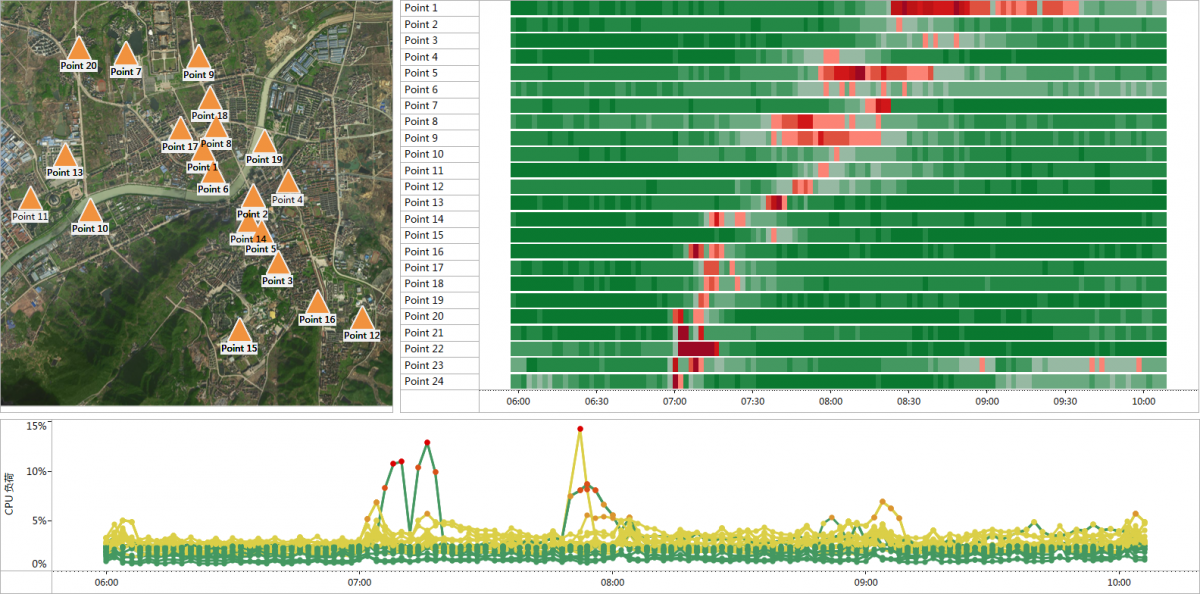Tableau helps telco team cut network-assessment time from months to one week
Alcatel-Lucent Shanghai Bell is a telecommunication and information enterprise in China. A Sino-foreign joint venture with extensive local expertise and global resources, the company delivers end-to-end telecommunications solutions and services in wireless and wireline, as well as network management. The company is dedicated to making communications more innovative, sustainable, and accessible for people, businesses and governments. This why Dr. Liu Qing (柳卿), Director of Professional Service Innovation (专业服务创新总监) at Alcatel-Lucent Shanghai Bell (上海贝尔股份有限公司), and his team of 10 data analysts work hard to ensure security and stability of its networks.

Dr. Liu Qing, Director of Professional Service Innovation at Alcatel-Lucent Shanghai Bell
The goal: Enhancing productivity and lowering costs
Dr. Liu Qing, Director of Professional Service Innovation at Alcatel-Lucent Shanghai Bell, and his Professional Service Innovation team wanted to boost productivity and lower costs. They knew that the answer existed in their large amount of data. It was only a matter of analyzing it and retrieving useful, actionable information. According to Dr. Liu, the team was using simple spreadsheets like Excel to sort data and manually chart and present the information. It was time consuming and the end deliverables did not deliver many insights. For example, the team couldn’t see the full perspective of a communication network when they analyzed network data. They could look at the data from the equipment and resource angle, or downtime and errors angle, or see its performance against its key performance index—but never all at once. Also, equipment assessments could take up to three months. Nevertheless, this assessment work is crucial. The view helps customers understand if they are gaining their required return on investment. For sales staff, the insights allow them to learn from experience and understand the actual resource requirement for projects of similar size. Dr. Liu said, “It was not just time consuming to analyze the large amount of data using spreadsheets. The process was prone to error since much of the work was done manually. The view we get on the data is also limited, and it was difficult to gain any useful insights from it.” Dr. Liu also manages 80 technical support personnel who are constantly deployed to various sites across the country, depending on requirements in the field. He needed a tool that could help him accurately identify the need for skills upgrades on the team. Also, he needed to ensure that he is deploying staff with the right skill-sets to each on-site job. His old system had no data visualization, which made it difficult to see skill gaps and determine the location of personnel. Dr. Liu started looking for a data analytics and visualization tool. His team evaluated a number of solutions and found Tableau to be most suitable as it allowed them to work with a large amount of data easily and quickly.
Organization-wide adoption of Tableau
Currently, Dr. Liu’s team uses Tableau to analyze all kinds of data, large and small. They leverage Tableau to analyze network log data and identify areas of discrepancies and irregularity. The information allows them to quickly access problems and resolve issues, which is crucial to maintaining a stable network and ensuring security. The data comes in structured and unstructured formats, originating from up to six different sources, belonging to various network applications. The team sometimes uses Splunk to clean up the data before feeding it into Tableau for analysis. Dr. Liu and his team also use Tableau to look into network equipment data. With Tableau, they can get a full picture of equipment deployment and identify wastage. Tableau allows them to look into the data and see each equipment item, which project it has been assigned to, and whether it has been fully utilized. Besides the Professional Service Innovation team, staff across different departments at Alcatel-Lucent Shanghai Bell also use Tableau. Staff now place relevant analytics findings on Tableau Server so that other users can access and make use of the information. Dr. Liu estimates that about 30 people access the Tableau dashboards for the information. Some are also exploring how to access information on mobile devices like tablets.

In 2015, a China telcommunications carrier began to speed up 4G network deployment on site. They wanted everyone to be able to enjoy high speeds from 4G everywhere and anytime. Marathons are special events for the telecom 4G network because high traffic puts pressure on the network. In this project, Alcatel-Lucent Shanghai Bell helped the customer track traffic, network CPU, memory, and network stability during marathons.
We are now able to see the entire network from multiple angles. This is because with Tableau, we can quickly change the perspective and what we want to explore in the same dataset, switching between what we want to focus on. This offers the team much better overall control and management of the network.
Gaining a complete view on each network
According to Dr. Liu, his team can now completely assess the equipment required for a communication network. He can complete end-to-end assessments in one week with Tableau, compared to one to three months previously with traditional analytics tools. Dr. Liu commented, “We are now able to see the entire network from multiple angles. This is because with Tableau, we can quickly change the perspective and what we want to explore in the same dataset, switching between what we want to focus on. This offers the team much better overall control and management of the network.” Tableau is now also used to efficiently manage and deploy technical support personnel. Dr. Liu said, “Tableau allows us to keep track of this team, accurately identifying where there is a need for skills upgrade and accurately match resource available with the skills requirement onsite.” They use Tableau visualizations to get a clear, weekly picture of skill gaps on the team. These gaps may exist because of system upgrades, change in equipment, etc. “It would have required us up to four days to come up with such a report prior to Tableau. Now all we need are two to three hours,” he added.
Minimizing data error with self-service analytics
Dr. Liu feels that self-service analytics, where users see and experiment with their own data, is a much more effective way of analyzing data and presenting it to users. “We can trust the analysis because with Tableau, data error is almost non-existing as data is directly fed into the software for analysis and there is no human element in between,” explained Dr. Liu. Dr. Liu also shared that he now actively advocates the use of Tableau within his company, helping others learn and consulting on where Tableau can be effectively applied.